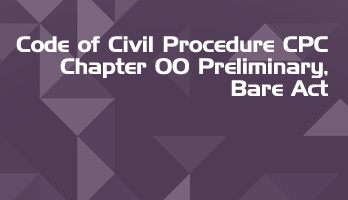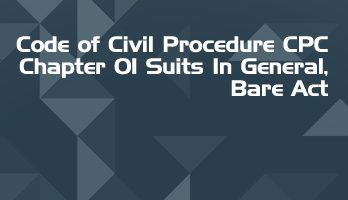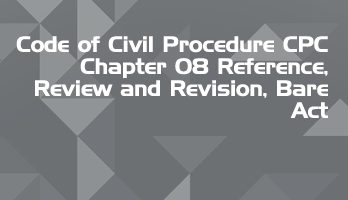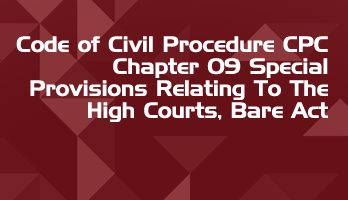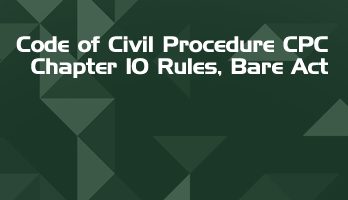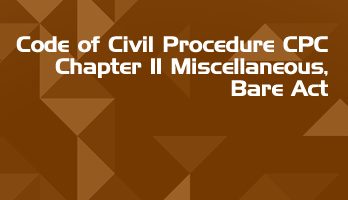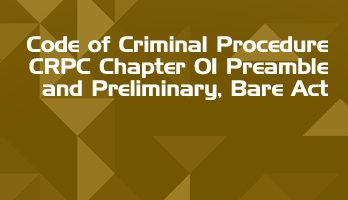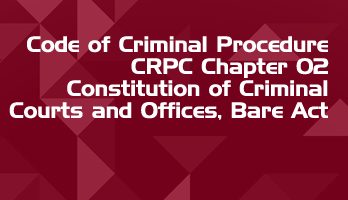A 'Bare act' is the actual legislation passed by the Parliament of India. Generally, an act sets out the high level legal and policy principles applicable to the subject matter of the law.
Most acts are accompanied by 'subsidiary legislation' such as rules, regulations, notifications and orders; which address the actual implementation detail of the act.
Free Full Course Available on LawMint's YouTube Channel
How to Land Your Dream LLB Internship in a Top Law Firm
- Part 1 - Introduction
- Part 2 - Internship Planning
- Part 3 - Internship Research
- Part 4 - Building Your Profile
- Part 5 - The Email
- Part 6 - The Resume
- Part 7 - The Cover Letter
- Part 8 - The Interview
- Part 9 - Self Development
Practical and comprehensive course, with real examples and step-by-step analysis of the complete internship application process. Check out LawMint's YouTube channel now!
The Indian Evidence Act, 1872
Chapter 7 – Of the Burden of Proof
Section 101 – Burden of proof
Whoever desires any Court to give judgment as to any legal right or liability dependent on the existence of facts which he asserts, must prove that those facts exist. When a person is bound to prove the existence of any fact, it is said that the burden of proof lies on that person.
Illustrations
- A desires a Court to give judgment that B shall be punished for a crime which A says B has committed. A must prove that B has committed the crime.
- A desires a Court to give judgment that he is entitled to certain land in the possession of B, by reason of facts which he asserts, and which B denies, to be true. A must prove the existence of those facts.
Section 102 – On whom burden of proof lies
The burden of proof in a suit or proceeding lies on that person who would fail if no evidence at all were given on either side.
Illustrations
- A sues B for land of which B is in possession, and which, as A asserts, was left to A by the will of C, B’s father. If no evidence were given on either side, B would be entitled to retain his possession. Therefore, the burden of proof is on A.
- A sues B for money due on a bond. The execution of the bond is admitted, but B says that it was obtained by fraud, which A denies. If no evidence were given on either side, A would succeed, as the bond is not disputed and the fraud is not proved. Therefore the burden of proof is on B.
Section 103 – Burden of proof as to particular fact
The burden of proof as to any particular fact lies on that person who wishes the Court to believe in its existence, unless it is provided by any law that the proof of that fact shall lie on any particular person.
Illustrations
- A prosecutes B for theft, and wishes the Court to believe that B admitted the theft to C. A must prove the admission.
- B wishes the Court to believe that, at the time in question, he was elsewhere. He must prove it.
Section 104 – Burden of proving fact to be proved to make evidence admissible
The burden of proving any fact necessary to be proved in order to enable any person to give evidence of any other fact is on the person who wishes to give such evidence.
Illustrations
- A wishes to prove a dying declaration by B. A must prove B’s death.
- A wishes to prove, by secondary evidence, the contents of a lost document. A must prove that the document has been lost.
Section 105 – Burden of proving that case of accused comes within exceptions
When a person is accused of any offence, the burden of proving the existence of circumstances bringing the case within any of the General Exceptions in the Indian Penal Code, (45 of 1860) or within any special exception or proviso contained in any other part of the same Code, or in any law defining the offence, is upon him, and the Court shall presume the absence of such circumstances.
Illustrations
- A, accused of murder, alleges that, by reason of unsoundness of mind, he did not know the nature of the act. The burden of proof is on A.
- A, accused of murder, alleges that, by grave and sudden provocation, he was deprived of the power of self – control; The burden of proof is on A.
- Section 325 of the Indian Penal Code (45 of 1860), provides that whoever, except in the case provided for by section 335, voluntarily causes grievous hurt, shall be subject to certain punishments. A is charged with voluntarily causing grievous hurt under section 325. The burden of proving the circumstances bringing the case under section 335 lies on A.
Section 106 – Burden of proving fact especially within knowledge
When any fact is especially within the knowledge of any person, the burden of proving that fact is upon him.
Illustrations
- When a person does an act with some intention other than that which the character and circumstances of the act suggest, the burden of proving that intention is upon him.
- A is charged with travelling on a railway without a ticket. The burden of proving that he had a ticket is on him
Section 107 – Burden of proving death of person known to have been alive within thirty years
When the question is whether a man is alive or dead, and it is shown that he was alive within thirty years, the burden of proving that he is dead is on the person who affirms it.
Section 108 – Burden of proving that person is alive who has not been heard of for seven years
Provided that when the question is whether a man is alive or dead, and it is proved that he has not been heard of for seven years by those who would naturally have heard of him if he had been alive, the burden of proving that he is alive is shifted to the person who affirms it.
Section 109 – Burden of proof as to relationship in the cases of partners, landlord and tenant, principal and agent
When the question is whether persons are partners, landlord and tenant, or principal and agent, and it has been shown that they have been acting as such, the burden of proving that they do not stand, or have ceased to stand, to each other in those relationships respectively, is on the person who affirms it.
Section 110 – Burden of proof as to ownership
When the question is whether any person is owner of anything of which he is shown to be in possession, the burden of proving that he is not the owner is on the person who affirms that he is not the owner.
Section 111 – Proof of good faith in transactions where one party is in relation of active confidence
Where there is a question as to the good faith of a transaction between parties, one of whom stands to the other in a position of active confidence, the burden of proving the good faith of the transaction is on the party who is in a position of active confidence.
Illustrations
- The good faith of a sale by a client to an attorney is in question in a suit brought by the client. The burden of proving the good faith of the transaction is on the attorney.
- The good faith of a sale by a son just come of age to a father is in question in a suit brought by the son. The burden of proving the good faith of the transaction is on the father.
Section 111A – Presumption as to certain offences
- Where a person is accused of having committed any offence specified in sub – section (2), in –
- any area declared to be a disturbed areas under any enactment, for the time being in force, making provision for the suppression of disorder and restoration and maintenance of public order; or
- any area in which there has been, over a period of more than one month, extensive disturbance of the public peace, and it is shown that such person had been at a place in such area at a time when firearms or explosives were used at or from that place to attack or resist the members of any armed forces or the forces charged with the maintenance of public order acting in the discharge of their duties, it shall be presumed, unless the contrary is shown, that such person had committed such offence.
- The offences referred to in sub – section (1) are the following, namely –
- an offence under section 121, section 121A section 122 or section 123 of the Indian Penal Code (45 of 1860);
- criminal conspiracy or attempt to commit, or abatement of, an offence under section 122 or section 123 of the Indian Penal Code (45 of 1860).
Section 112 – Birth during marriage, conclusive proof of legitimacy
The fact that any person was born during the continuance of a valid marriage between his mother and any man, or within two hundred and eighty days after its dissolution, the mother remaining unmarried, shall be conclusive proof that he is the legitimate son of that man, unless it can be shown that the parties to the marriage had no access to each other at any time when he could have been begotten.
Section 113 – Proof of cession of territory
A notification in the Official Gazette that any portion of British territory has before the commencement of Part III of the Government of India Act, 1935 (26 Geo. 5, ch. 2) been ceded to any Native State, Prince or Ruler, shall be conclusive proof that a valid cession of such territory took place at the dale mentioned in such notification
Section 113A – Presumption as to abetment of suicide by a married woman
When the question is whether the commission of suicide by a woman had been abetted by her husband or any relative of her husband and it is shown that she had committed suicide within a period of seven years from the date of her marriage and that her husband or such relative of her husband had subjected her to cruelty, the Court may presume, having regard to all the other circumstances of the case, that such suicide had been abetted by her husband or by such relative of her husband.
Explanations For the purposes of this section, cruelty shall have the same meaning as in section 498A of the Indian Penal Code (45 of 1860).
Section 113B – Presumption as to dowry death
When the question is whether a person has committed the dowry death of a woman and it is shown that soon before her death such woman has been subjected by such person to cruelty or harassment for, or in connection with, any demand for dowry, the Court shall presume that such person had caused the dowry death.
Explanations For the purposes of this section dowry death shall have the same meaning as in section 304B, of the Indian Penal Code (45 of 1860).
Section 114 – Court may presume existence of certain facts
The Court may presume the existence of any fact which it thinks likely to have happened, regard being had to the common course of natural events, human conduct and public and private business, in their relation to the facts of the particular case.
Illustrations The Court may presume –
- That a man who is in possession of stolen goods soon after the theft is either the theft or has received the goods knowing them to be stolen, unless he can account for his possession;
- That an accomplice is unworthy of credit, unless he is corroborated in material particulars;
- That a bill of exchange, accepted or endorsed, was accepted or endorsed for good consideration;
- That a thing or stale of things which has been shown to be in existence within a period shorter than that within which such things or slate of things usually cease to exist, is still in existence;
- That judicial and official acts have been regularly performed.
- That the common course of business has been followed in particular cases;
- That evidence which could be and is not produced would, if produced, be unfavourable to the person who withholds it;
- That if a man refuses to answer a question which he is not compelled to answer by law, the answer, if given would be unfavourable to him;
- That when a document creating an obligation is in the hands of the obligor, the obligation has been discharged.
But the Court shall also have regard to such facts as the following, in considering whether such maxims do or do not apply to the particular case before it;
- As to illustration (a) – A shop – keeper has in his till a marked rupee soon after it was stolen, and cannot account for its possession specifically, but is continually receiving rupees in the course of his business;
- As to illustration (b) – A, a person of the highest character is tried for causing a man’s death by an act of negligence in arranging certain machinery. B, a person of equally good character, who also took part in the arrangement, describes precisely what was done, and admits and explains me common carelessness of A and himself;
- As to illustration (b) – A crime is committed by several persons. A, B and C, three of the criminals, are captured on the spot and kept apart from each other. Each gives an account of the crime implicating D, and the accounts corroborate each other in such a manner as to render previous concert highly improbable;
- As to illustration (c) – A, the drawer of a bill of exchange, was a man of business. B, the acceptor, was young and ignorant person, completely under A’s influence;
- As to illustration (d) – It is proved that a river ran in a certain course five years ago, but it is known that there have been floods since that time which might change its course;
- As to illustration (e) – A judicial Act, the regularity of which is in question, was performed under exceptional circumstances;
- As to illustration (f) – The question is, whether a letter was received. It is shown to have been posted, but the usual course of the post was interrupted by disturbances;
- As to illustration (g) – A man refuses to produce a document which would bear on a contract of small importance on which he is sued, but which might also injure the feelings and reputation of his family;
- As to illustration (h) – A man refuses to answer a question which he is not compelled by law to answer, but the answer to it might cause loss to him in matters unconnected with the matter in relation to which it is asked;
- As to illustration (i) – A bond is in possession of the obligor, but the circumstances of the case are such that he may have stolen it.
Section 114A – Presumption as to absence of consent in certain prosecutions for rape.
In a prosecution for rape under clause (a), clause (b), clause (c), clause (d), clause (e), clause (f), clause (g), clause (h), clause (i), clause (j), clause (k), clause (l), clause (m) or clause (n) of sub – section (2) of section 376 of the Indian Penal Code, where sexual intercourse by the accused is proved and the question is whether it was without the consent of the woman alleged to have been raped and such woman states in her evidence before the court. That she did not consent, the court shall presume that she did not consent.
Explanations
- In this section, “sexual intercourse” shall mean any of the acts mentioned in clauses (a) to (d) of section 375 of the Indian Penal Code.
1 Criminal Law (Amendment) Act, 2013
Important Central Acts in Regional Languages
Legislative department website also features regional language versions of several important Central Acts.
Free Full Course Available on LawMint's YouTube Channel
How to Land Your Dream LLB Internship in a Top Law Firm
- Part 1 - Introduction
- Part 2 - Internship Planning
- Part 3 - Internship Research
- Part 4 - Building Your Profile
- Part 5 - The Email
- Part 6 - The Resume
- Part 7 - The Cover Letter
- Part 8 - The Interview
- Part 9 - Self Development
Practical and comprehensive course, with real examples and step-by-step analysis of the complete internship application process. Check out LawMint's YouTube channel now!



